__________________________________________
So
where did the Frontiersmen get the cloth to make enough char
to keep lighting their camp fires? That was the question
that we were kicking around at the Nationals in May. If they
used old shirts that had virtually no other use…wait a
minute…rags. Ok so once a shirt gets worn out and
couldn’t be patched (not sure how far a shirt has to get
worn before it becomes un-patchable) it would first get used
as rags…or possibly muzzle load patch, then it becomes a
candidate for char?
Seems
like they would carry a bolt of cotton material around at
all times so they could make char cloth and start their
fires. Or maybe not. Well a couple of the guys said they had
read accounts talking about "punk wood" and this
was a alternative to char cloth. That raised a whole other
series of questions. What the heck is punk wood? Does it
matter which kind of tree it comes from? What has to be done
to it (if anything) to make it work and how DOES it work?
So
being the intrepid explorers we are, we tried a few things.
And here is what we found out. Punk wood is the spongy wood
that comes from a rotten log. Seems the process doesn’t
work very well unless you use the punk wood from a deciduous
(hardwood, leaves fall seasonally) tree. In other words a
coniferous (softwood, or cone bearing) tree doesn’t seem
to work as well, if at all.
So
here is the process:
First
chip out pieces of punk wood from a rotted log. Here we used
Buckeye.
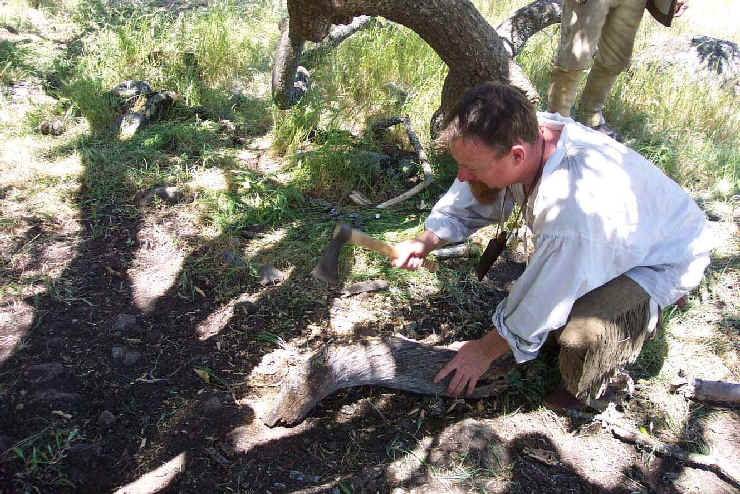
Ian
Chipping out the punk wood
Using your
char tin (tin with a small hole in the lid) arrange the
pieces of punk wood.
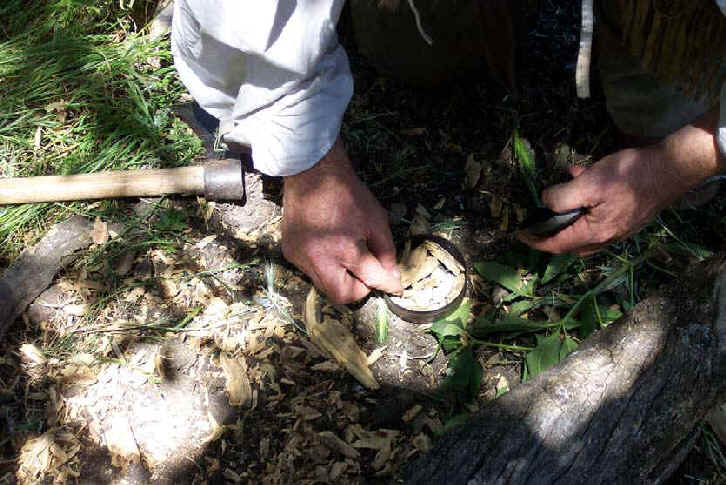
Capt.
Tom placing the chips in the tin
Close the
lid and put the tin over a fire. Keep it there until you
stop seeing smoke coming out of the hole.
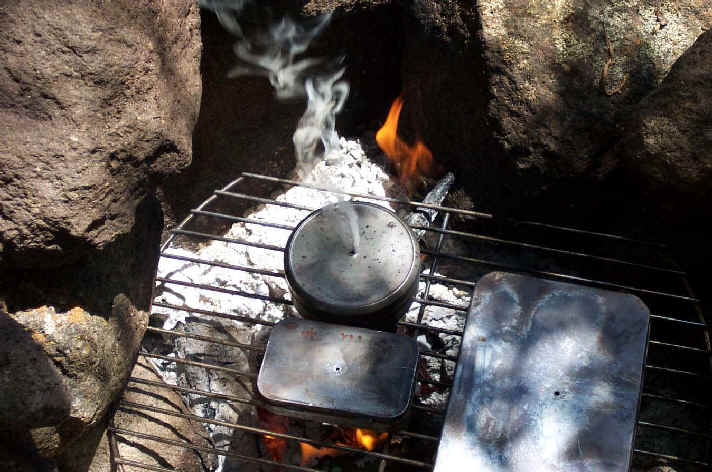
When
you let the tin cool for a minute, check to be sure all the
pieces are completely charred. If not, close the tin and put
it back on the fire for a bit longer. Depending on the size
and shape of the tin, you may need to move it around on the
fire to get all the pieces to char properly.
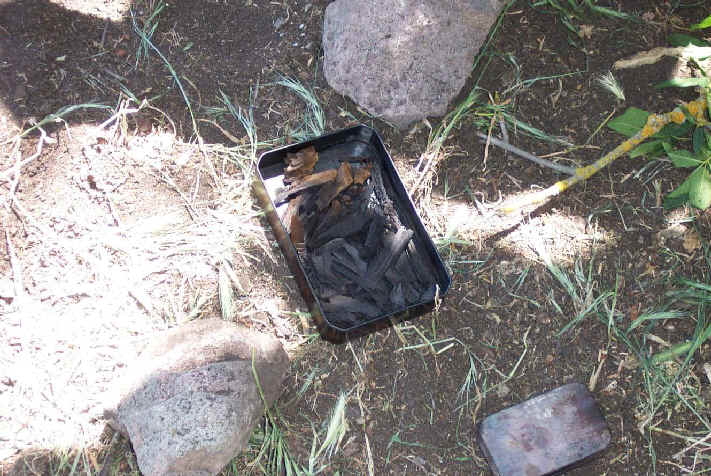
Needs
to Char a bit longer
Now
you’re ready to start a fire! How does that get done you
ask…well I’ll tell you.
First
you catch a spark with your newly made char. But it’s done
slightly differently than when using char cloth. You hold
the steel over the tin and strike down with the flint.
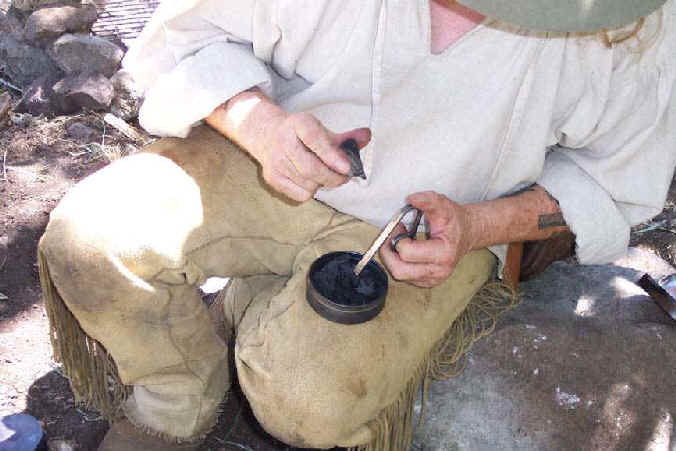
Capt.
Tom usually gets multiple sparks to catch in one pass
Take
your "nest" material (unraveled jute, rope, dry
grass, cedar bark etc.) place it on the punk that has caught
the spark and gently blow till you light the nest material.
The
really cool part is that once you get the flame, immediately
close the lid of your tin and either hold your thumb over
the hole or drop it with the hole down and the char will go
out and be ready for your next time.
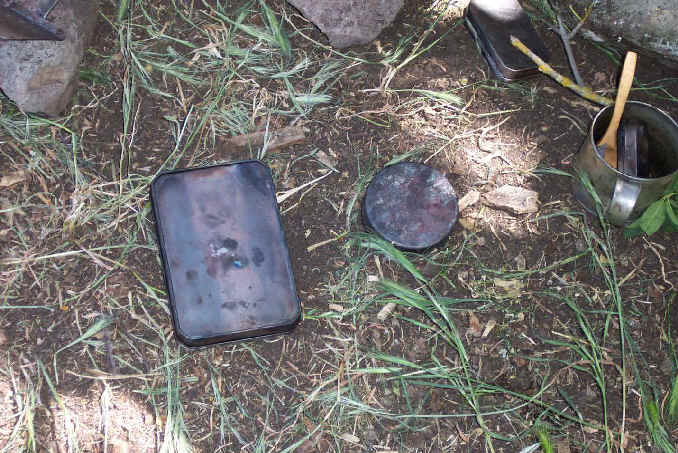
Like
any other skill, give it a try and practice a bit and
you’ll find that this method is not only easy to do, but
longer lasting and easier to replenish out on the trail.
Daniel
Miller